| Botanical Name |
Chamaecrista capensis var. capensis - Cassia capensis |
| Family |
Fabaceae - The legume and pod-bearing family. (Pea & Bean Family) |
| Pronunciation |
kam-ay-KRIS-ta ka-PEN-sis |
| Common Name(s) |
IsiXhosa: Umngana; Unobuthongwana
IsiZulu: Imbubu; Umbonisela
|
| Plant Group |
- Ground Cover A plant with a low-growing, spreading habit, grown specifically to cover the ground.
- Perennial A plant whose life cycle lasts for three or more seasons.
- Veld Flower Small veld flowers of interest, rather than for their usefulness in the garden. Some of these plants have garden potential, particularly for less formal garden situations.
|
| Plant Size |
- Small
| Tree | 4m to 8m |
| Shrub | 50cm to 75cm |
| Perennial/ground cover | 10cm to 20cm |
| Bulb | 20cm to 30cm |
| Succulent | 10cm to 20cm |
|
| Position |
- Partial Shade The area is in shade for part of the day and in full sun for part of the day.
- Sun The area is in full sun for all or most of the day, all year round.
|
| General Information |
- Drought Tolerance: High The plant is well adapted to arid conditions; it can survive long periods of drought and high temperatures without extra water.
- Salt spray tolerant A plant with specific adaptations enabling it to grow in a saline environment.
- Sand tolerant Plants adapted to survive in nutrient poor, very sandy soils.
- Water Wise Plant species originating from low rainfall regions that require less water to survive and thrive than other plant species.
- Wind Tolerant Plants able to withstand the effect of strong winds.
|
| Specific Information |
Chamaecrista capensis is a perennial veld plant with leaves reminiscent of acacia or mimosa, having numerous pairs of small, narrow leaflets. Stems, which may be prostrate, semi-erect or erect, grow from a woody rootstock and reach from 20 to 90 cm high. All parts of the plant are slightly hairy. Fruits are long, many-seeded pods which become very dark when ripe.
|
| Ad Break |
|
| Flowers |
| Description |
five broad petals in a saucer-shape, held singly on short stalks
|
| Season |
- Spring to Summer Plants will seldom bloom for the entire season as given in the list, but should flower during a period within these parameters.
|
| Colour |
|
| Growth Rate |
- Moderate Specifying growth rate can be very misleading as there is considerable variation of growth rate depending on type and species of plant, available water, supplementary feeding, mulching and general care, as well as the plants suitability and adaptability to the garden environment.
|
| Plant Uses |
- Attracts bees, butterflies or other insects This plant attracts insects which can be food for birds or other creatures in your garden.
- Suitable for coastal gardens Plants adapted to dry, sandy soil, forceful wind, limited rainfall and intense sunlight.
- Suitable for seaside gardens Plants that will survive the hostile environment of harsh salty winds, dry sandy soil, irregular rainfall and heat found in seaside gardens.
- Wild Garden An indigenous garden planted for the benefit of wildlife and birds. Provides food, water, a variety of mini-biomes and no poisonous chemicals are used.
|
| Distribution and Habitat |
in the provinces of the Eastern Cape, KwaZulu-Natal, Limpopo, Mpumalanga, Gauteng and North West:
coastally: on sea-facing slopes among grasses and other vegetation;
inland: in grasslands and thorn veld as well as in disturbed places
|
| Planting Suggestions |
I have found no data pertaining to the use of this plant in a garden, nor have I experimented with it.
|
| Medicinal Uses |
|
| Ad Break |
|


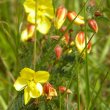

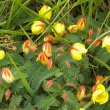
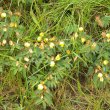
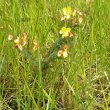
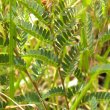


Discuss this plant
Share knowledge, ask a question or give an experience.